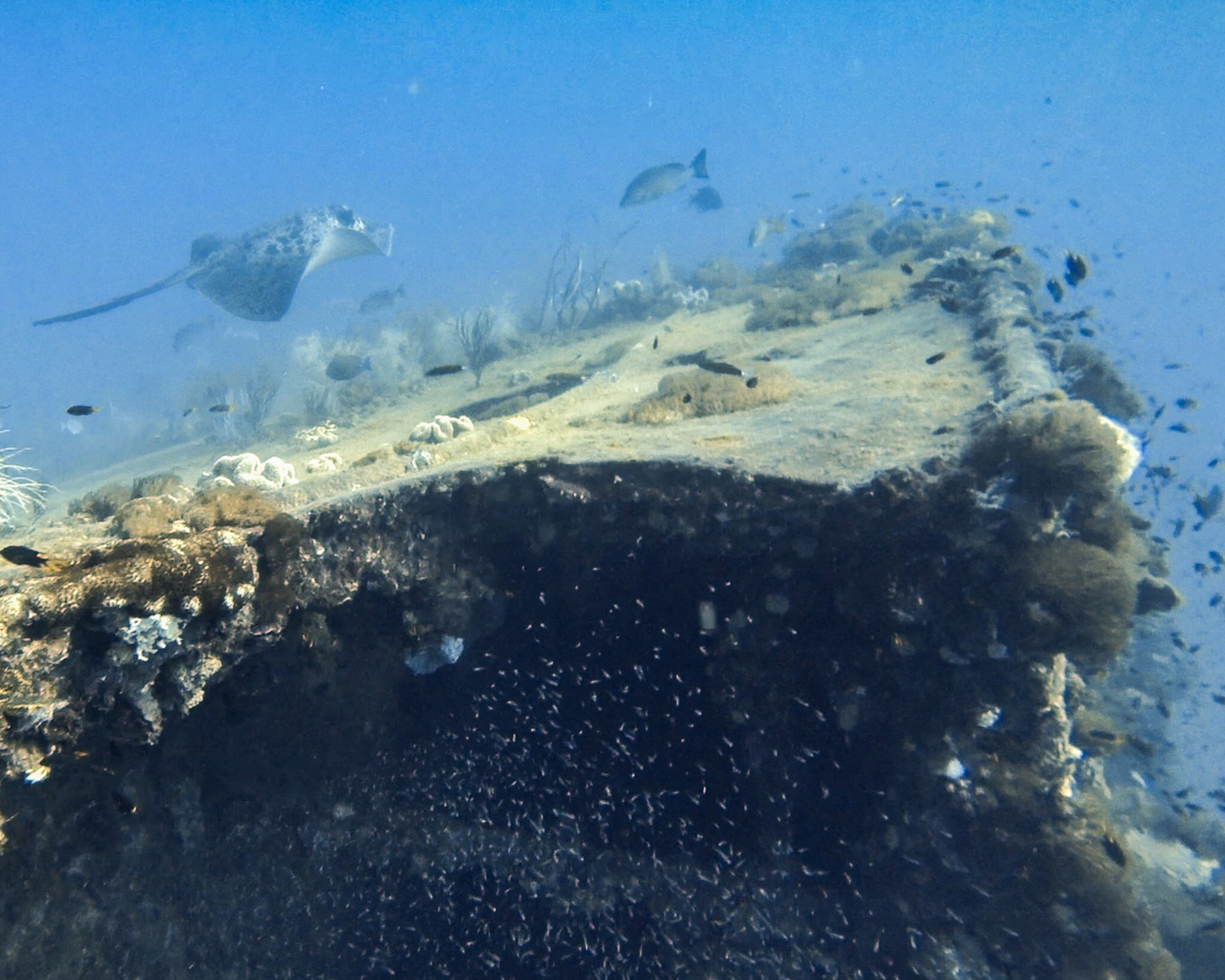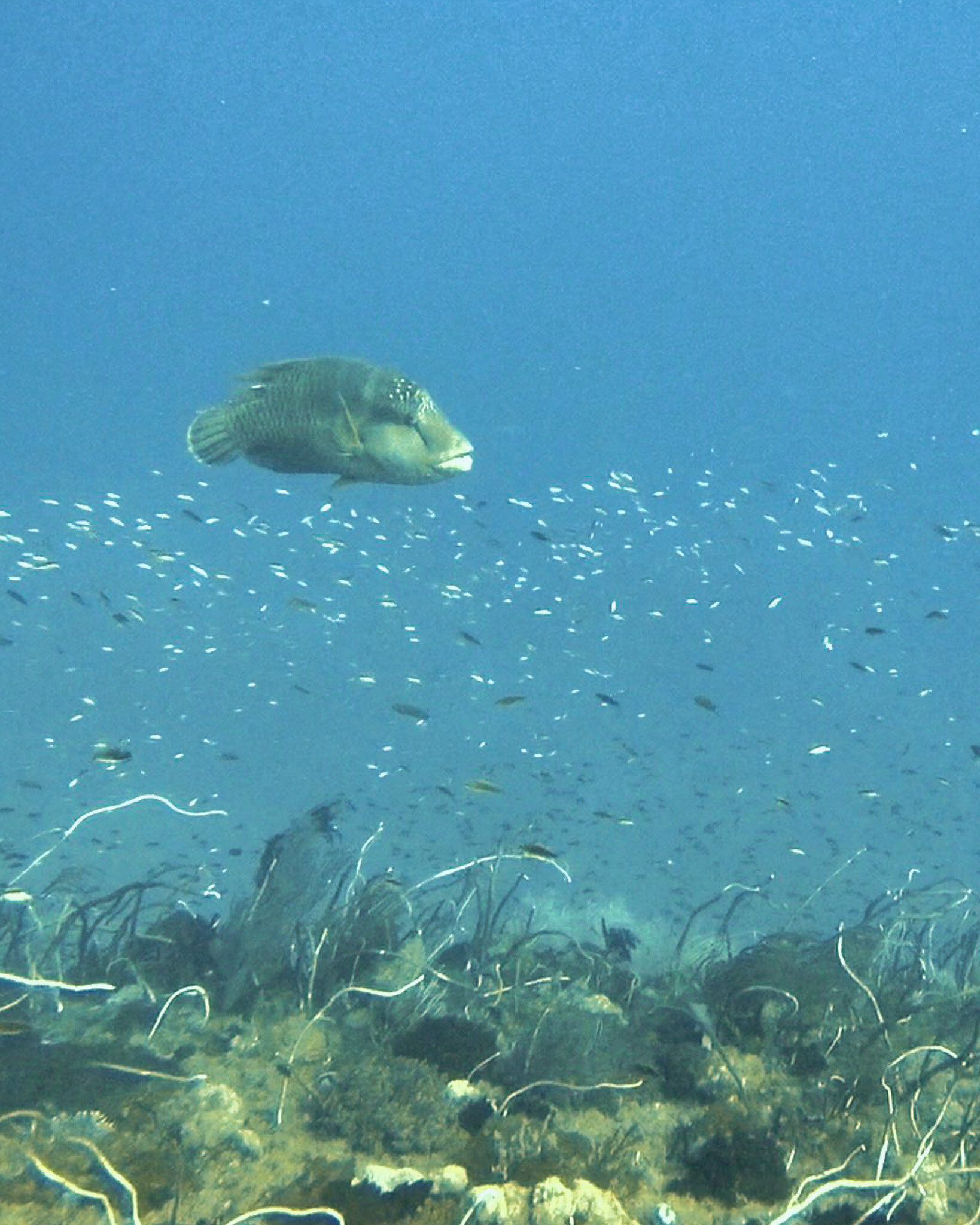Diving Australias Best Wreck site the SS Yongala
On this trip, we knew diving was an activity high on our list, but we could only afford to do it once or twice, so we’d better make it a good site.
We hadn’t heard of the SS Yongala until we were in Cape Hillsborough just north of Mackay, when we read about it on a brochure.
It wasn’t until we reached Ayr that we realised we were in the town closest to the wreck (other tours depart Townsville for a 3-hour boat trip instead of the half hour from Alva Beach), and so we done a bit of research as we had a feeling if we kept driving north and missed out on this dive site, we would totally regret it – and boy are we glad we stayed!
This dive is for certified divers only with a minimum requirement of 6 logged dives.
A bit of history on the wreck…
One of Australia’s most tragic maritime disasters and the largest, most intact shipwreck, the SS Yongala was a passenger steam ship en route from Melbourne to Cairns when it hit a cyclone and sank off Cape Bowling Green, Queensland on the 23rd of March in 1911, one year before Titanic just to put things into perspective.
The lives of all 122 passengers and crew, as well as a racehorse named Moonshine and a Lincoln Red Bull were lost, and the wreck lay undiscovered for nearly 50 years.
The Dive
We dived with Yongala Dive who are based in Alva Beach just a short drive from Ayr.
Our day started at 7.30am, we were fitted with a wetsuit, flippers and scuba gear before given a short but thorough brief of our dive.
The wreck lies 12 nautical miles from Alva Beach, beginning at 14 meters at the top and extending down 28 meters on the sand, lying on its starboard side.
Photo Credit: Yongala Dive
Leaving the dive centre our group of 12 jumped in a 4WD for a quick off-road trip down to the beach where a tractor towed the boat out into the water.
It was quite a rocky trip out on the boat with 15-20 knots, but we were recommended to take seasickness pills and everyone was fine throughout the day. On the ride out, our instructor Corey went over the deep diver training we would need to complete once reaching the sea floor at 28 meters. (It was our deepest dive at this point and you are required to complete this if you haven't previously). We simply had to do a repetitive finger count and look at a colour chart to point out which colours would change the deeper we went underwater, this ensures we aren't experiencing nitrogen narcosis due to the depth we were diving at.
Upon arrival at the SS Yongala, we geared up and started our descent via the safety line which was connected to our boat and down to the bow of the wreck. The water wasn’t that cold considering it being the middle of winter in Australia.
We descended straight to the sea floor at 28 meters to complete our deep diver training which took under 5 minutes, and then we were off to explore this incredible dive site.
The visibility was 16 meters which enabled us to see quite a bit of the wreck.
It was an overwhelming site seeing the wreck for the first time because of how well preserved it is. Due to the way it sunk, this wreck very much resembles its original structure, unlike other wrecks that are damaged from e.g. bomb strikes, this wreck is in one piece.
As the sea floor surrounding the wreck is just sand, the wreck itself has generated an artificial reef system for many species of coral and marine life.
It is a whole different world under the ocean and to be floating past this coral encrusted wreck among tonnes of ‘BIG’ marine life such as Queensland Gropers, Giant Marble Rays, Giant Trevally, schools of Barracuda, Turtles and Sea Snakes, it was an experience we will never ever forget.
Only a couple of days prior to our dive, our guide and another young man Fin who was back with us for his second dive in one week, both had a rare encounter with a humpback whale down near the wreck - how incredible!
Our first dive was 30 minutes reaching a max depth of 28 meters and then we resurfaced for a 45-minute morning tea break of fruit, cheese, ham and crackers.
Our second dive was another 30 minutes with a max depth of 24 meters.
We had a brilliant encounter with a huge Marble Ray, it glided over the top of us and all the ‘cleaner fish’ swarmed, it was exactly like a scene in Nemo!
We completed the second dive and headed back to the beach for our 4WD transfer back to the shop.
We had a quick rinse off at their hot showers followed by a delicious BBQ lunch and everyone sat around talking about their dive experience and got to know each other a little more.
The day finished at 3.30pm and we had a lazy afternoon before driving north to Townsville.
Pricing for the Dive
One day diving ( 2 x dives ) with full SCUBA Equipment Hire, Deep Diver Training, morning tea and afternoon BBQ lunch, totalled to $297/pp.
Worth every penny!
We hope you enjoyed this blog as much as we enjoyed the dive!
Until next time,
MOOSKi Twins
: )






















